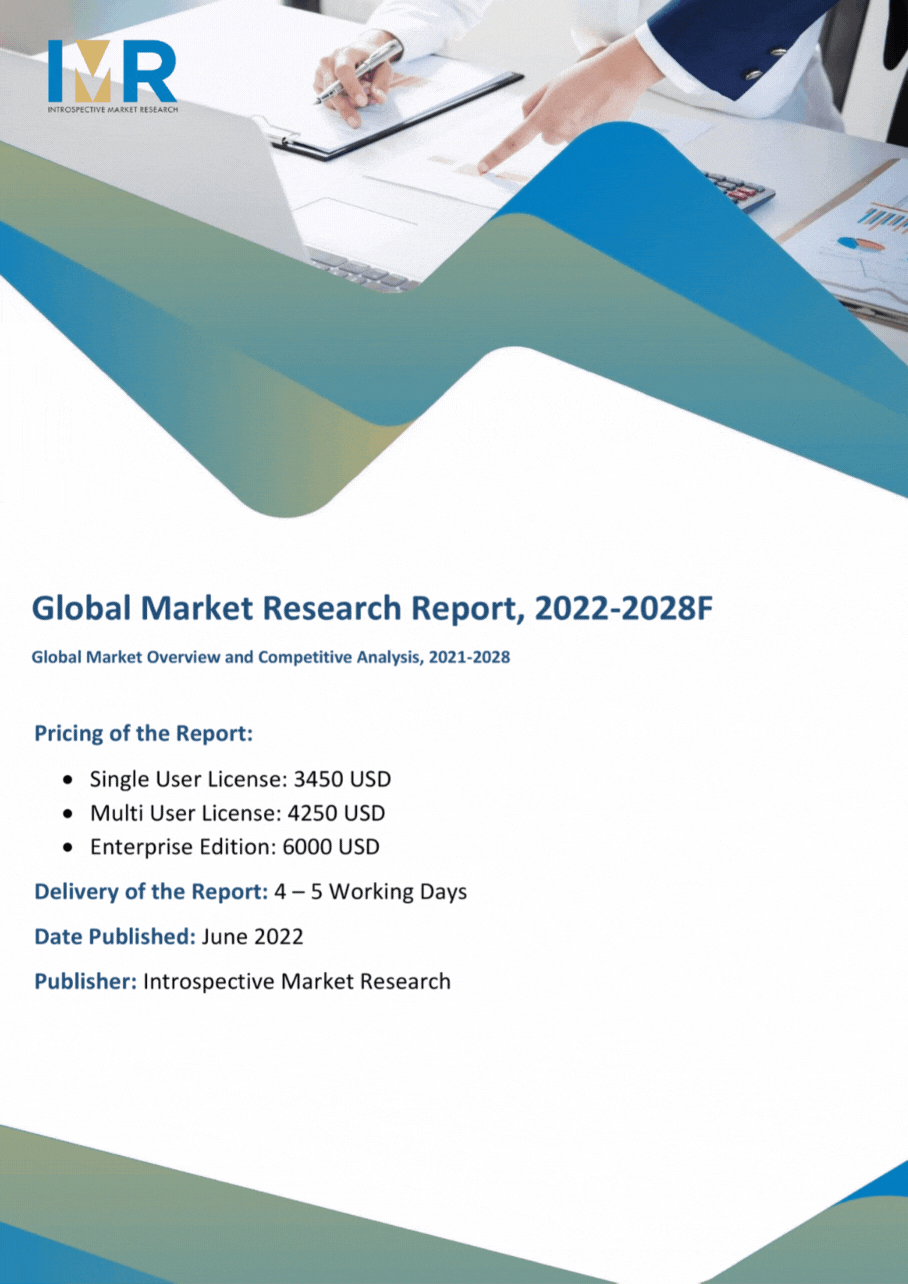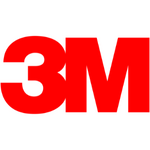Genome Editing Market Synopsis
Genome Editing Market Size Was Valued at USD 7.39 Billion in 2023, and is Projected to Reach USD 30.78 Billion by 2032, Growing at a CAGR of 17.18% From 2024-2032.
The genome editing market is defined by the industries involving and profiting from the application and monetization of the precise alteration of genetic material in organisms. It comprises miscellaneous methods like CRISPR-Cas9, TALENs, zinc finger nucleases and TiNrAGE that allows precise modicication of DNA sequences with intent for wellness therapy, improved crop plants, and pattern investigation. The components involved in the genome editing market are remarkably diverse and competitive since this industry is still expanding as a concept: there are biotechnology companies, academic centers, and pharmaceutical producers and suppliers all working in the process of advancement, improvement, and application of the genome editing tools and cures for the variety of societal and scientific issues that humanity faces now.
- The Global market for genome editing is growing at an unprecedented rate because of the need for individualized medicines and tremendous technological advancement. Molecular biology has been advanced by technologies for editing genome, a list of which includes; CRISPR-Cas9, TALENs, and ZFNs. This has given rise to new avenues in genealogy therapy for hereditary diseases, developmental innovative drugs, and enhancement of agricultural yield.
- The development in genetic disorders, high research and development expenses, raising utilization of cgm in various sectors are anticipated to drive the remarkable growth of global genome editing market. Genome editing has attracted a lot of attention especially in health sector, mainly as a treatments options to diseases such as cancer, HIV/AIDS, sickle cell anemia, cystic fibrosis among others. Interestingly, the use of these genome editing techniques in agriculture has similar value to improve crop yield, enhance nutritional quality, and develop new crop varieties that are resistant to pests and draught.

Genome Editing Market Trend Analysis
Expanding Applications of Genome Editing in Pharmaceutical and Biotechnology Industries
- The revolutionary advanced technology after being initiated in basic molecular biology research, the genome editing technology has transformed much and is now a vital segment of technology in biotechnology and pharmaceutical fields.. Initially, the methods like CRISPR-Cas9 and some other instrumentalities of genome engineering were more limited to entering the context of academic laboratories and were used there as the means for investigating the nature and functioning of genetic frameworks. Nonetheless, I agree with the author that the unprecedented accuracy and efficiency of the CRISPR-Cas9 have transformed drug research and discovery approaches.
- It has reached a point where companies in the biotechnology and pharmaceutical sector are applying Genomic editing in tackling what is otherwise a challenge in the life of human beings. What was previously perceived as nearly invincible barriers – cancer, hereditary metabolic disorders and other rare pathologies, are no longer out of the driving range of therapeutic targeting. Now, scientists use CRISPR to edit genes with unheard of accuracy and precision, and they say it gets even better.
- Personalised medicine using genome editing seems to be a very promising technology for curing individual cases of cancer. With CRISPR-based methodologies directly addressing specific genetic anomalies that drive cancer progression, not only is there the potential for more effective treatments, but potentially CAR-T that is less carcinogenic than an existing treatment modality such as chemotherapy.
Accelerating Innovation through Collaborative Partnerships in the Genome Editing Market
- Global interests in the genome editing industry continue to grow, spurring research and driving the application of novel therapies onto the market. The major drug makers are increasingly seeking partnership with biotech companies and universities to leverage these advancements as they understand the disruptive nature of gene editing tool.
- It is important to understand that these joint ventures are regularization forms of partnerships throughout which the leading idea is that of a collaboration of effort and resources of two or more parties. These partners will bring their capabilities, tools, and infrastructure to bear on continuing to develop and apply the underlying basic research in genome editing. This is important in eradicating the many challenges that are associated with the introduction of new products to the market in the health sector, including manufacture challenges, trial challenges, and challenges in the regulations.
Genome Editing Market Segment Analysis:
Genome Editing Market is Segmented based on Technology, Delivery Method, Application, Mode, and End-user.
By Technology, (CRISPR) / Cas9segment is expected to dominate the market during the forecast period
- In the family of genetic engineering technologies, CRISPR/Cas9 is the most popular one that occupies the biggest share of the market. The main advantage of choosing CRISPR/Cas9 system is its high specificity, speed, and adaptability to genome modification. This technology based on appearance of natural function of certain bacteria has changed the entire field of study as it works on the principle of targeting specific genes into various organisms ranging from microorganisms to plants and animals.
- Moreover, its applicability and easy process have made it more popular in the broad spectrum among various areas and uses. Large and small pharmaceutical and biotechnology organizations, academic and government laboratories, and CROs have adopted CRISPR/Cas9 for its potential to make research and development more expeditious. It’s most evident in applications where cells are modified ex vivo, which means outside the organism, before being returned, and in genetic imprinting projects squarely across cell lines, animals, and plant species.
By Delivery Method, Ex-vivosegment held the largest share in 2023
- Techniques of ex-vivo delivery in genetic engineering include the alteration of cells external to the life form then returning it to the body The use of ex-vivo techniques presents a clean environment for the genetic engineer in that alteration of the gene takes place outside the life form. This approach has gained prominent use because of the factually ruggedized protocol and canonical usage in different cell types. Ex-vivo analysis allows the molecular, genetic, and epigenetic manipulations, including knockout, knockin or modifying particular genes or their fragments with a high level of sensitivity and specificity. Also, for the use of cells which is derived from the organism, they can first be characterized and sifted before receding back to the body and this greatly eliminates the chances of any unwanted or unexpected genetic modifications.
- This is also because of the ability of ex-vivo methodologies to fit into numerous applications that range from fundamental investigation in human cell biology to clinical application in regenerative medicine and gene therapy. For instance, in cell line engineering for biotechnology and pharmaceutical applications, the ex-vivo techniques let for the development of the desired cell lines that has the specific characteristic, which are, for example, high yield or richer disease modeling. Similarly in the context of clinical use, ex-vivo gene editing has the potential in the field of personalised medicine approaches where patient autologous cells may undergo correction of genetic mutations before transplantation or re-infusion. All in all, owing to the set procedures, effectiveness as well as flexibility of ex-vivo delivery techniques, these approaches are preferable for most researchers and clinicians in the field of genetic engineering.
Genome Editing Market Regional Insights:
Asia-Pacific is Expected to Dominate the Market Over the Forecast period
- While it is now becoming true that the Asia-Pacific region is playing an increasingly important role in genome editing experiments owing to various factors. Geographically the area is massive, and the population heterogenic and this makes the area a lucrative market in addressing genetic diseases and bettering the health of people. This has been a discernible trend in countries such as China, Japan & India which have recognized enhanced commitment of either public or private capital to augment the potency of infrastructural transformations in biotechnology. Such investments are not only boosting R&D but also promoting the partnership of academic and also industrial ties, and the development of brand-new therapeutic approaches suitable for the local genetic makeup. Therefore, there has been increased development of new genome editing techniques primarily based on disease management and patients’ care.
- Also, the Asia-Pacific region has some special opportunities for the genome editing both in terms of research and further successful commercialization. With relative access to skilled labour and affordable production costs it also a perfect place for biotechnology corporations that want to create and manufacture novel genome editing treatments. In addition, supportive government polices to spur the development of related sector, including biotechnology innovation are being put in place. This makes the Asia-Pacific region as the right market for the genome editing where great potentials that can transform the health care system and the global biotechnology industry are expected. Going forward the region is expected to assume even more prominence in defining the future advances in genome editing and precision medicine.
Active Key Players in the Genome Editing Market
- Merck KGaA
- Cibus Inc.
- Recombinetics
- Sangamo Therapeutics
- Editas Medicine
- Precision BioSciences
- CRISPR Therapeutics
- Intellia Therapeutics, Inc.
- Caribou Biosciences, Inc
- Cellectis S.A.
- AstraZeneca
- Takara Bio Inc.
- Horizon Discovery Ltd. (Revvity, Inc.)
- Danaher Corporation
- Transposagen Biopharmaceuticals, Inc.
- Genscript Biotech Corp
- New England Biolabs
- OriGene Technologies, Inc.
- bluebird bio, Inc.
- Lonza
- Thermo Fisher Scientific, Inc
- Other Key Players
Key Industry Developments in the Genome Editing Market:
- In January 2024, Danaher Corporation collaborated with the Innovative Genomics Institute (IGI). This partnership aims to develop CRISPR-based therapies for rare genetic disorders, leveraging Danaher’s diverse technological resources and IGI’s academic expertise.
- In November 2023, Cellectis and AstraZeneca entered into a collaboration agreement to accelerate advanced therapeutics development in oncology and immunology.
- In July 2023, Sangamo Therapeutics and Chroma Medicine collaborated to develop epigenetic medicines using Sangamo's Zinc Finger Proteins (ZFPs). Chroma will evaluate ZFPs for specific targets outside the central nervous system, potentially licensing them for development and commercialization.
- In May 2023, a research program at the Lewis Katz School of Medicine at the University of Nebraska Medical Center reported successful treatment of HIV infection in animals using CRISPR.
|
Global Genome Editing Market |
|||
|
Base Year: |
2023 |
Forecast Period: |
2024-2032 |
|
Historical Data: |
2017 to 2023 |
Market Size in 2023: |
USD 7.39 Bn. |
|
Forecast Period 2024-32 CAGR: |
17.18% |
Market Size in 2032: |
USD 30.78 Bn. |
|
Segments Covered: |
By Technology |
|
|
|
By Delivery Method |
|
||
|
By Application |
|
||
|
By Mode |
|
||
|
By End-user |
|
||
|
By Region |
|
||
|
Key Market Drivers: |
|
||
|
Key Market Restraints: |
|
||
|
Key Opportunities: |
|
||
|
Companies Covered in the report: |
|
||
Chapter 1: Introduction
1.1 Scope and Coverage
Chapter 2:Executive Summary
Chapter 3: Market Landscape
3.1 Market Dynamics
3.1.1 Drivers
3.1.2 Restraints
3.1.3 Opportunities
3.1.4 Challenges
3.2 Market Trend Analysis
3.3 PESTLE Analysis
3.4 Porter's Five Forces Analysis
3.5 Industry Value Chain Analysis
3.6 Ecosystem
3.7 Regulatory Landscape
3.8 Price Trend Analysis
3.9 Patent Analysis
3.10 Technology Evolution
3.11 Investment Pockets
3.12 Import-Export Analysis
Chapter 4: Genome Editing Market by Technology
4.1 Genome Editing Market Snapshot and Growth Engine
4.2 Genome Editing Market Overview
4.3 (CRISPR)/Cas9
4.3.1 Introduction and Market Overview
4.3.2 Historic and Forecasted Market Size in Value USD and Volume Units (2017-2032F)
4.3.3 Key Market Trends, Growth Factors and Opportunities
4.3.4 (CRISPR)/Cas9: Geographic Segmentation Analysis
4.4 TALENs/MegaTALs
4.4.1 Introduction and Market Overview
4.4.2 Historic and Forecasted Market Size in Value USD and Volume Units (2017-2032F)
4.4.3 Key Market Trends, Growth Factors and Opportunities
4.4.4 TALENs/MegaTALs: Geographic Segmentation Analysis
4.5 ZFN
4.5.1 Introduction and Market Overview
4.5.2 Historic and Forecasted Market Size in Value USD and Volume Units (2017-2032F)
4.5.3 Key Market Trends, Growth Factors and Opportunities
4.5.4 ZFN: Geographic Segmentation Analysis
4.6 Meganuclease
4.6.1 Introduction and Market Overview
4.6.2 Historic and Forecasted Market Size in Value USD and Volume Units (2017-2032F)
4.6.3 Key Market Trends, Growth Factors and Opportunities
4.6.4 Meganuclease: Geographic Segmentation Analysis
4.7 Others
4.7.1 Introduction and Market Overview
4.7.2 Historic and Forecasted Market Size in Value USD and Volume Units (2017-2032F)
4.7.3 Key Market Trends, Growth Factors and Opportunities
4.7.4 Others: Geographic Segmentation Analysis
Chapter 5: Genome Editing Market by Delivery Method
5.1 Genome Editing Market Snapshot and Growth Engine
5.2 Genome Editing Market Overview
5.3 Ex-vivo and In-vivo
5.3.1 Introduction and Market Overview
5.3.2 Historic and Forecasted Market Size in Value USD and Volume Units (2017-2032F)
5.3.3 Key Market Trends, Growth Factors and Opportunities
5.3.4 Ex-vivo and In-vivo: Geographic Segmentation Analysis
Chapter 6: Genome Editing Market by Application
6.1 Genome Editing Market Snapshot and Growth Engine
6.2 Genome Editing Market Overview
6.3 Genetic Engineering
6.3.1 Introduction and Market Overview
6.3.2 Historic and Forecasted Market Size in Value USD and Volume Units (2017-2032F)
6.3.3 Key Market Trends, Growth Factors and Opportunities
6.3.4 Genetic Engineering: Geographic Segmentation Analysis
6.4 Clinical Applications
6.4.1 Introduction and Market Overview
6.4.2 Historic and Forecasted Market Size in Value USD and Volume Units (2017-2032F)
6.4.3 Key Market Trends, Growth Factors and Opportunities
6.4.4 Clinical Applications: Geographic Segmentation Analysis
Chapter 7: Genome Editing Market by Mode
7.1 Genome Editing Market Snapshot and Growth Engine
7.2 Genome Editing Market Overview
7.3 Contract and In-house
7.3.1 Introduction and Market Overview
7.3.2 Historic and Forecasted Market Size in Value USD and Volume Units (2017-2032F)
7.3.3 Key Market Trends, Growth Factors and Opportunities
7.3.4 Contract and In-house: Geographic Segmentation Analysis
Chapter 8: Genome Editing Market by End-user
8.1 Genome Editing Market Snapshot and Growth Engine
8.2 Genome Editing Market Overview
8.3 Biotechnology and pharmaceutical companies
8.3.1 Introduction and Market Overview
8.3.2 Historic and Forecasted Market Size in Value USD and Volume Units (2017-2032F)
8.3.3 Key Market Trends, Growth Factors and Opportunities
8.3.4 Biotechnology and pharmaceutical companies: Geographic Segmentation Analysis
8.4 Academic and government research institutes & Contract research organizations
8.4.1 Introduction and Market Overview
8.4.2 Historic and Forecasted Market Size in Value USD and Volume Units (2017-2032F)
8.4.3 Key Market Trends, Growth Factors and Opportunities
8.4.4 Academic and government research institutes & Contract research organizations: Geographic Segmentation Analysis
Chapter 9: Company Profiles and Competitive Analysis
9.1 Competitive Landscape
9.1.1 Competitive Benchmarking
9.1.2 Genome Editing Market Share by Manufacturer (2023)
9.1.3 Industry BCG Matrix
9.1.4 Heat Map Analysis
9.1.5 Mergers and Acquisitions
9.2 MERCK KGAA
9.2.1 Company Overview
9.2.2 Key Executives
9.2.3 Company Snapshot
9.2.4 Role of the Company in the Market
9.2.5 Sustainability and Social Responsibility
9.2.6 Operating Business Segments
9.2.7 Product Portfolio
9.2.8 Business Performance
9.2.9 Key Strategic Moves and Recent Developments
9.2.10 SWOT Analysis
9.3 CIBUS INC
9.4 RECOMBINETICS
9.5 SANGAMO THERAPEUTICS
9.6 EDITAS MEDICINE
9.7 PRECISION BIOSCIENCES
9.8 CRISPR THERAPEUTICS
9.9 INTELLIA THERAPEUTICS INC
9.10 CARIBOU BIOSCIENCES INC
9.11 CELLECTIS S.A
9.12 ASTRAZENECA
9.13 TAKARA BIO INC
9.14 HORIZON DISCOVERY LTD. (REVVITY
9.15 INC.)
9.16 DANAHER CORPORATION
9.17 TRANSPOSAGEN BIOPHARMACEUTICALS INC
9.18 GENSCRIPT BIOTECH CORP
9.19 NEW ENGLAND BIOLABS
9.20 ORIGENE TECHNOLOGIES INC
9.21 BLUEBIRD BIO INC
9.22 LONZA
9.23 THERMO FISHER SCIENTIFIC INC
9.24 OTHER MAJOR PLAYERS
Chapter 10: Global Genome Editing Market By Region
10.1 Overview
10.2. North America Genome Editing Market
10.2.1 Key Market Trends, Growth Factors and Opportunities
10.2.2 Top Key Companies
10.2.3 Historic and Forecasted Market Size by Segments
10.2.4 Historic and Forecasted Market Size By Technology
10.2.4.1 (CRISPR)/Cas9
10.2.4.2 TALENs/MegaTALs
10.2.4.3 ZFN
10.2.4.4 Meganuclease
10.2.4.5 Others
10.2.5 Historic and Forecasted Market Size By Delivery Method
10.2.5.1 Ex-vivo and In-vivo
10.2.6 Historic and Forecasted Market Size By Application
10.2.6.1 Genetic Engineering
10.2.6.2 Clinical Applications
10.2.7 Historic and Forecasted Market Size By Mode
10.2.7.1 Contract and In-house
10.2.8 Historic and Forecasted Market Size By End-user
10.2.8.1 Biotechnology and pharmaceutical companies
10.2.8.2 Academic and government research institutes & Contract research organizations
10.2.9 Historic and Forecast Market Size by Country
10.2.9.1 US
10.2.9.2 Canada
10.2.9.3 Mexico
10.3. Eastern Europe Genome Editing Market
10.3.1 Key Market Trends, Growth Factors and Opportunities
10.3.2 Top Key Companies
10.3.3 Historic and Forecasted Market Size by Segments
10.3.4 Historic and Forecasted Market Size By Technology
10.3.4.1 (CRISPR)/Cas9
10.3.4.2 TALENs/MegaTALs
10.3.4.3 ZFN
10.3.4.4 Meganuclease
10.3.4.5 Others
10.3.5 Historic and Forecasted Market Size By Delivery Method
10.3.5.1 Ex-vivo and In-vivo
10.3.6 Historic and Forecasted Market Size By Application
10.3.6.1 Genetic Engineering
10.3.6.2 Clinical Applications
10.3.7 Historic and Forecasted Market Size By Mode
10.3.7.1 Contract and In-house
10.3.8 Historic and Forecasted Market Size By End-user
10.3.8.1 Biotechnology and pharmaceutical companies
10.3.8.2 Academic and government research institutes & Contract research organizations
10.3.9 Historic and Forecast Market Size by Country
10.3.9.1 Bulgaria
10.3.9.2 The Czech Republic
10.3.9.3 Hungary
10.3.9.4 Poland
10.3.9.5 Romania
10.3.9.6 Rest of Eastern Europe
10.4. Western Europe Genome Editing Market
10.4.1 Key Market Trends, Growth Factors and Opportunities
10.4.2 Top Key Companies
10.4.3 Historic and Forecasted Market Size by Segments
10.4.4 Historic and Forecasted Market Size By Technology
10.4.4.1 (CRISPR)/Cas9
10.4.4.2 TALENs/MegaTALs
10.4.4.3 ZFN
10.4.4.4 Meganuclease
10.4.4.5 Others
10.4.5 Historic and Forecasted Market Size By Delivery Method
10.4.5.1 Ex-vivo and In-vivo
10.4.6 Historic and Forecasted Market Size By Application
10.4.6.1 Genetic Engineering
10.4.6.2 Clinical Applications
10.4.7 Historic and Forecasted Market Size By Mode
10.4.7.1 Contract and In-house
10.4.8 Historic and Forecasted Market Size By End-user
10.4.8.1 Biotechnology and pharmaceutical companies
10.4.8.2 Academic and government research institutes & Contract research organizations
10.4.9 Historic and Forecast Market Size by Country
10.4.9.1 Germany
10.4.9.2 UK
10.4.9.3 France
10.4.9.4 Netherlands
10.4.9.5 Italy
10.4.9.6 Russia
10.4.9.7 Spain
10.4.9.8 Rest of Western Europe
10.5. Asia Pacific Genome Editing Market
10.5.1 Key Market Trends, Growth Factors and Opportunities
10.5.2 Top Key Companies
10.5.3 Historic and Forecasted Market Size by Segments
10.5.4 Historic and Forecasted Market Size By Technology
10.5.4.1 (CRISPR)/Cas9
10.5.4.2 TALENs/MegaTALs
10.5.4.3 ZFN
10.5.4.4 Meganuclease
10.5.4.5 Others
10.5.5 Historic and Forecasted Market Size By Delivery Method
10.5.5.1 Ex-vivo and In-vivo
10.5.6 Historic and Forecasted Market Size By Application
10.5.6.1 Genetic Engineering
10.5.6.2 Clinical Applications
10.5.7 Historic and Forecasted Market Size By Mode
10.5.7.1 Contract and In-house
10.5.8 Historic and Forecasted Market Size By End-user
10.5.8.1 Biotechnology and pharmaceutical companies
10.5.8.2 Academic and government research institutes & Contract research organizations
10.5.9 Historic and Forecast Market Size by Country
10.5.9.1 China
10.5.9.2 India
10.5.9.3 Japan
10.5.9.4 South Korea
10.5.9.5 Malaysia
10.5.9.6 Thailand
10.5.9.7 Vietnam
10.5.9.8 The Philippines
10.5.9.9 Australia
10.5.9.10 New Zealand
10.5.9.11 Rest of APAC
10.6. Middle East & Africa Genome Editing Market
10.6.1 Key Market Trends, Growth Factors and Opportunities
10.6.2 Top Key Companies
10.6.3 Historic and Forecasted Market Size by Segments
10.6.4 Historic and Forecasted Market Size By Technology
10.6.4.1 (CRISPR)/Cas9
10.6.4.2 TALENs/MegaTALs
10.6.4.3 ZFN
10.6.4.4 Meganuclease
10.6.4.5 Others
10.6.5 Historic and Forecasted Market Size By Delivery Method
10.6.5.1 Ex-vivo and In-vivo
10.6.6 Historic and Forecasted Market Size By Application
10.6.6.1 Genetic Engineering
10.6.6.2 Clinical Applications
10.6.7 Historic and Forecasted Market Size By Mode
10.6.7.1 Contract and In-house
10.6.8 Historic and Forecasted Market Size By End-user
10.6.8.1 Biotechnology and pharmaceutical companies
10.6.8.2 Academic and government research institutes & Contract research organizations
10.6.9 Historic and Forecast Market Size by Country
10.6.9.1 Turkey
10.6.9.2 Bahrain
10.6.9.3 Kuwait
10.6.9.4 Saudi Arabia
10.6.9.5 Qatar
10.6.9.6 UAE
10.6.9.7 Israel
10.6.9.8 South Africa
10.7. South America Genome Editing Market
10.7.1 Key Market Trends, Growth Factors and Opportunities
10.7.2 Top Key Companies
10.7.3 Historic and Forecasted Market Size by Segments
10.7.4 Historic and Forecasted Market Size By Technology
10.7.4.1 (CRISPR)/Cas9
10.7.4.2 TALENs/MegaTALs
10.7.4.3 ZFN
10.7.4.4 Meganuclease
10.7.4.5 Others
10.7.5 Historic and Forecasted Market Size By Delivery Method
10.7.5.1 Ex-vivo and In-vivo
10.7.6 Historic and Forecasted Market Size By Application
10.7.6.1 Genetic Engineering
10.7.6.2 Clinical Applications
10.7.7 Historic and Forecasted Market Size By Mode
10.7.7.1 Contract and In-house
10.7.8 Historic and Forecasted Market Size By End-user
10.7.8.1 Biotechnology and pharmaceutical companies
10.7.8.2 Academic and government research institutes & Contract research organizations
10.7.9 Historic and Forecast Market Size by Country
10.7.9.1 Brazil
10.7.9.2 Argentina
10.7.9.3 Rest of SA
Chapter 11 Analyst Viewpoint and Conclusion
11.1 Recommendations and Concluding Analysis
11.2 Potential Market Strategies
Chapter 12 Research Methodology
12.1 Research Process
12.2 Primary Research
12.3 Secondary Research
|
Global Genome Editing Market |
|||
|
Base Year: |
2023 |
Forecast Period: |
2024-2032 |
|
Historical Data: |
2017 to 2023 |
Market Size in 2023: |
USD 7.39 Bn. |
|
Forecast Period 2024-32 CAGR: |
17.18% |
Market Size in 2032: |
USD 30.78 Bn. |
|
Segments Covered: |
By Technology |
|
|
|
By Delivery Method |
|
||
|
By Application |
|
||
|
By Mode |
|
||
|
By End-user |
|
||
|
By Region |
|
||
|
Key Market Drivers: |
|
||
|
Key Market Restraints: |
|
||
|
Key Opportunities: |
|
||
|
Companies Covered in the report: |
|
||
Frequently Asked Questions :
The forecast period in the Genome Editing Market research report is 2024-2032.
Merck KGaA; Cibus Inc.; Recombinetics; Sangamo Therapeutics; Editas Medicine; Precision BioSciences; CRISPR Therapeutics; Intellia Therapeutics Inc.; Caribou Biosciences, Inc; Cellectis S.A.; AstraZeneca; Takara Bio Inc.; Horizon Discovery Ltd. (Revvity, Inc.); Danaher Corporation; Transposagen Biopharmaceuticals, Inc.; Genscript Biotech Corp; New England Biolabs; OriGene Technologies, Inc.; bluebird bio, Inc.; Lonza; Thermo Fisher Scientific, Inc. and Other Major Players.
The Genome Editing Market is segmented into By Technology, By Delivery Method, By Application, By Mode, By End-user and region. By Technology, the market is categorized into (CRISPR)/Cas9, TALENs/MegaTALs, ZFN, Meganuclease and Others. By Delivery Method, the market is categorized into Ex-vivo and In-vivo. By Application, the market is categorized into Genetic Engineering and Clinical Applications. By Mode, the market is categorized into Contract and In-house. By End-user, the market is categorized into Biotechnology and pharmaceutical companies, Academic and government research institutes and Contract research organizations. By region, it is analyzed across North America (U.S.; Canada; Mexico), Europe (Germany; U.K.; France; Italy; Russia; Spain, etc.), Asia-Pacific (China; India; Japan; Southeast Asia, etc.), South America (Brazil; Argentina, etc.), Middle East & Africa (Saudi Arabia; South Africa, etc.).
The genome editing market refers to the commercial landscape revolving around the utilization and commercialization of technologies designed to precisely modify genetic material in living organisms. This includes a range of techniques such as CRISPR-Cas9, TALENs, and zinc finger nucleases, which enable targeted alterations to DNA sequences for various purposes, including therapeutic applications, agricultural improvements, and basic research. As a rapidly evolving sector, the genome editing market encompasses a diverse array of players, from biotechnology companies and academic institutions to pharmaceutical firms, all engaged in developing, refining, and deploying genome editing tools and therapies to address a multitude of societal and scientific challenges.
Genome Editing Market Size Was Valued at USD 7.39 Billion in 2023, and is Projected to Reach USD 30.78 Billion by 2032, Growing at a CAGR of 17.18% From 2024-2032.



































